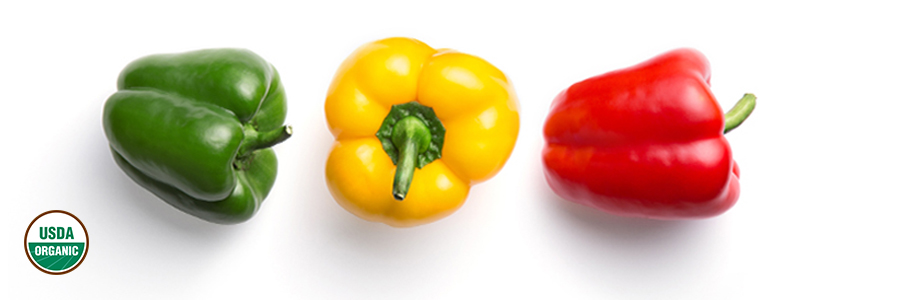


Sign-up for {N}power to get exclusive discounts, newsletters, members-only features, and more!
 Denver - Design District - Alameda and Broadway
Denver - Design District - Alameda and Broadway
368 S Broadway
Denver, CO 80209
United States
 Preferred Store:
Select a Store
Preferred Store:
Select a Store


Roasting the turkey, stuffing the stockings, crunching through the snow… ‘tis the season of holidays with all of our favorite traditions and flavors, and it reminds us of the most festive veggie in the produce basket. We’re thinking of the one that can be stuffed to the max, roasted to perfection, and crunched on whenever you need a healthy snack. It comes in red, yellow, orange, and green, and it’s shaped for all sorts of fun. Ring a BELL anyone?
Sweet bell peppers will add a festive touch to any spread, whether you stuff them for a colorful Thanksgiving side, or use their crinkly shapes to build a holiday veggie platter. They also happen to be one of the best dietary sources of vitamin C, with one medium red bell pepper packing 152 mg of vitamin C—double the amount of a medium orange! When it comes to keeping our skin holiday party ready, we can all benefi t from extra vitamin C. It’s necessary for making collagen, and collagen is key to healthy, smooth and glowing skin. Vitamin C is also a potent antioxidant that our bodies cannot make, which means consuming whole food sources of it on the daily should be on everyone’s holiday to-do list.
Organic is the kind of bell pepper that we feature on our party menus. These beauties aren’t just grown without synthetic pesticides, they are also a richer source of antioxidants than conventionally grown ones. A Polish study discovered that organic sweet bell peppers had “significantly” more vitamin C and carotenoids than conventional, and this isn’t the first time that organic produce has scored higher in antioxidants than conventional. Do we smell organic, roasted sweet peppers in your future?
When the theme is “synthetic pesticides,” conventional bell peppers will always show up for the party. They placed number 12 on the Environmental Working Group’s 2018 Dirty Dozen List, with almost 90 percent testing positive for pesticide residues. It’s not the first time they’ve been featured on the Dirty Dozen; in fact, they’ve ranked on the list every year of the last fi ve. Even less festive is the sheer variety of pesticides used on conventional bell peppers: 53 different residues showed up in tests performed by the USDA Pesticide Data Program. An extra helping of toxins on our party plates isn’t good for any of us, but pesticides pose greater hazards to the developing bodies of kids. Dr. Philip Landrigan of the Mt. Sinai School of Medicine isn’t alone in his assessment that “even low levels of pesticide exposure can be harmful to infants, babies, and young children…” We want to keep our kids’ health as vibrant as the holiday festivities they love, which means conventional bell peppers will never be in our party plans.



Sign-up for {N}power to get exclusive discounts, newsletters, members-only features, and more!
